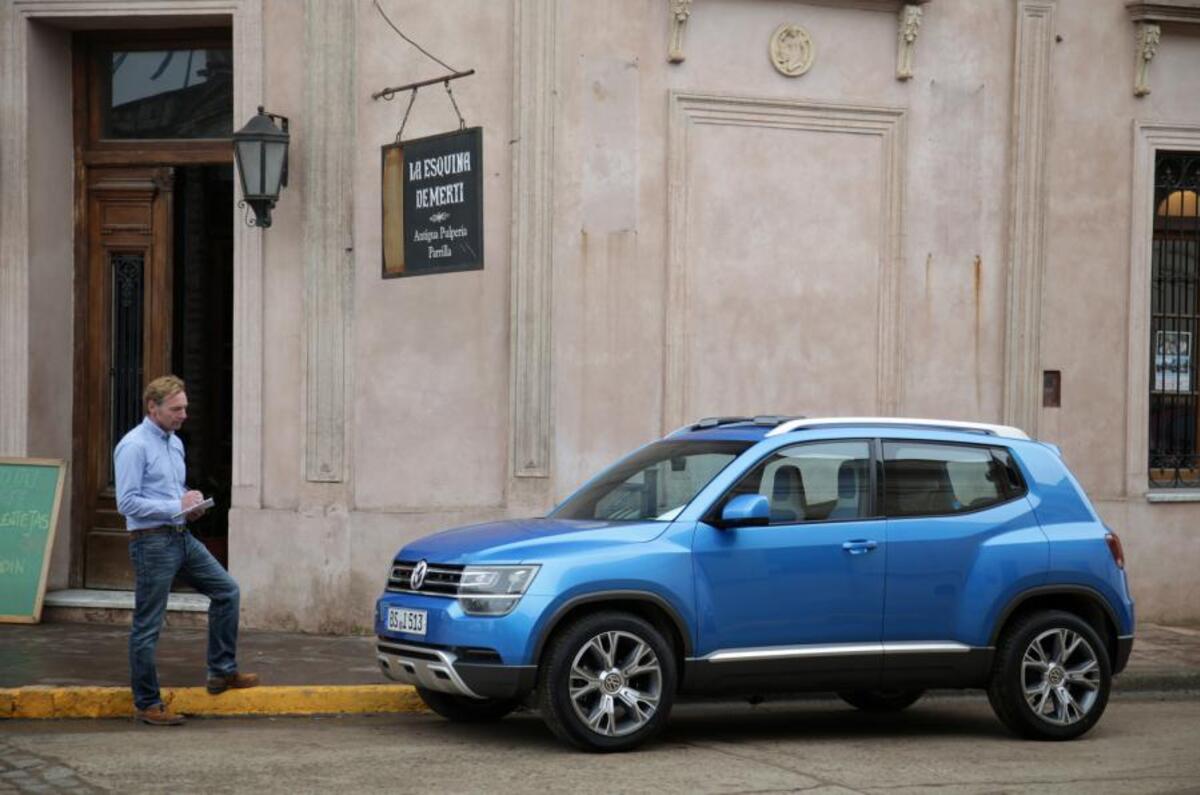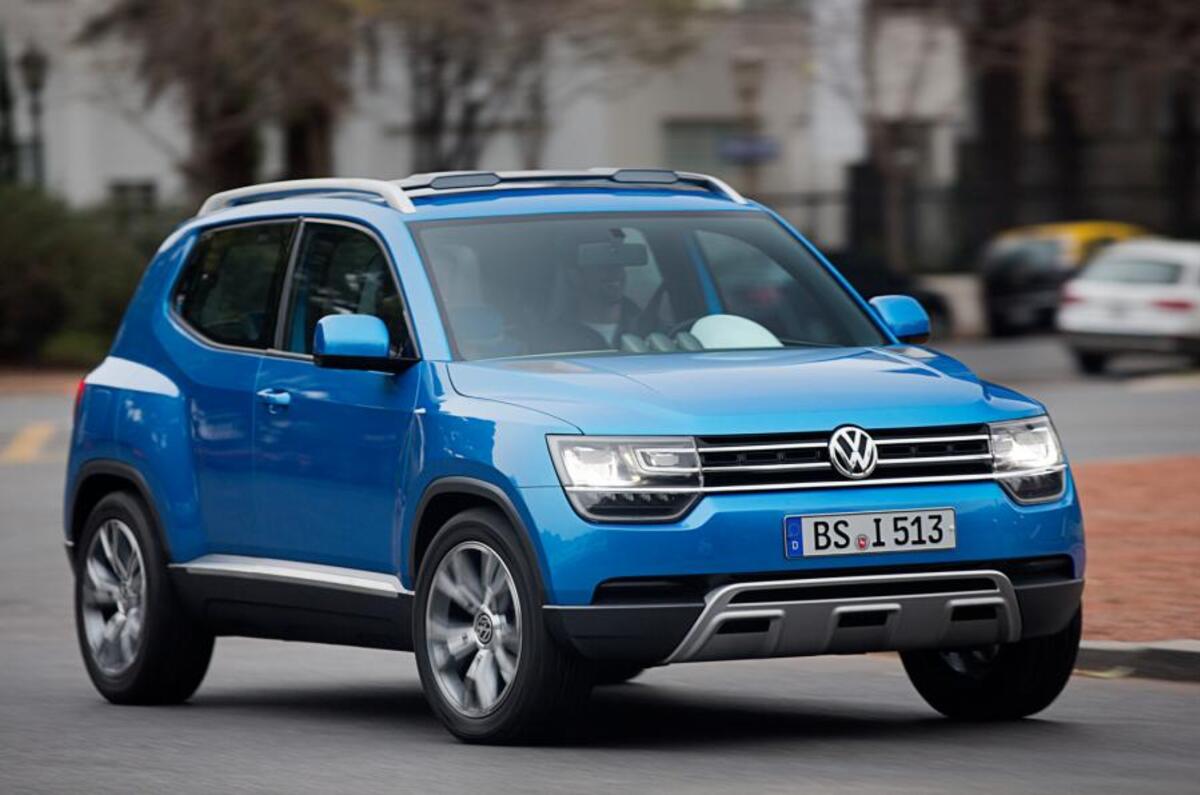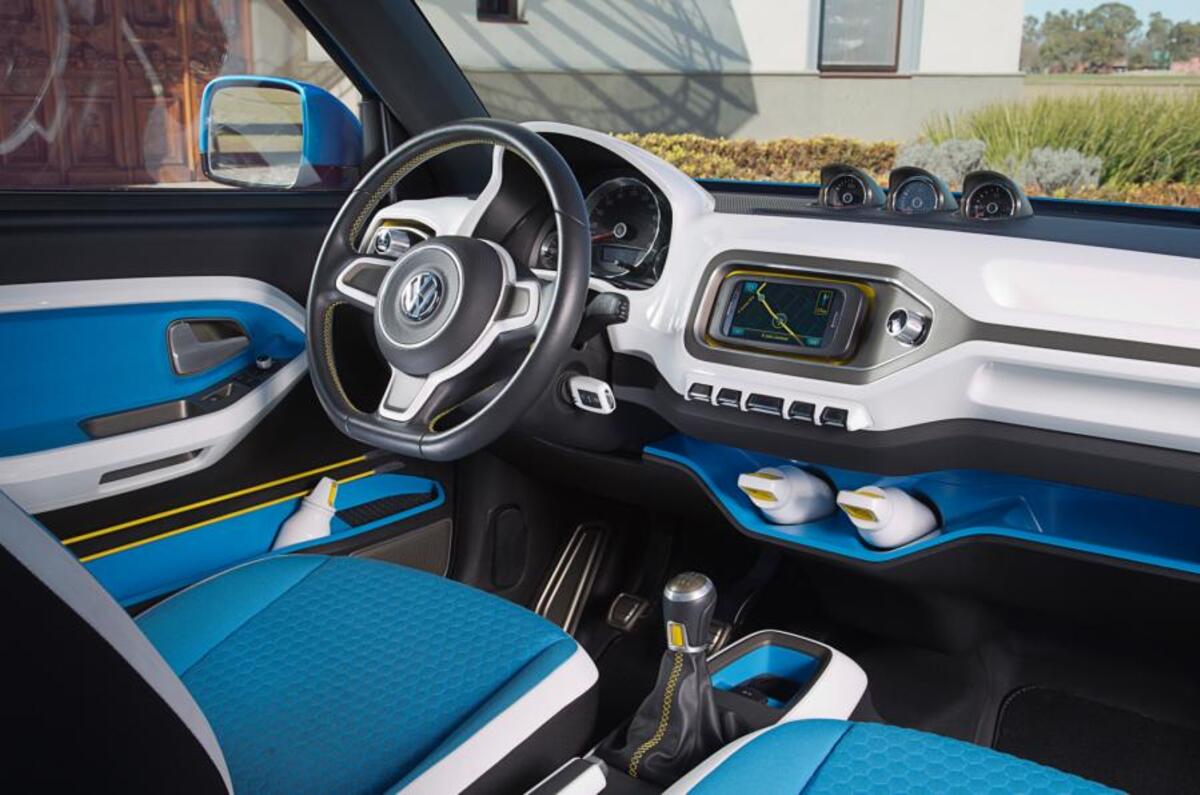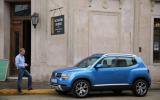The Volkswagen Taigun concept is a compact four-seater SUV that's set to rival the likes of the Ford EcoSport and Fiat Panda Trekking.
Parked up next to the kerb in the sleepy Argentinean town of San Antonio Areco, the Taigun is put into perspective in the very surroundings it can expect to encounter when sales begin in 2016.
Concept cars have a tendency to appear out of place away from the spotlights of a motor show, but apart from its vivid blue paint scheme the new entry level Volkswagen SUV looks thoroughly convincing among the cafes, shop fronts and municipal buildings that line the town’s square.
It is unmistakably a Volkswagen when you're standing next to it, with clear similarities to the larger Volkswagen Tiguan. A wheel-at-each corner stance also gives the Taigun a heavy dose of visual confidence for something so compact – an observation that is further enforced by its 17-inch wheels, which with 205/65 tyres help to fill its substantial arches.
Nothing is official just yet but signs are the new five door will see production with only subtle changes to exterior styling, a collaboration between Volkswagen’s main design studio in Wolfsburg and its Italian off-shoot Giugiaro.
Officials on hand in Argentina this week suggested the grille could be toned down to reflect the more restrained look of other recent Volkswagen models. The same goes for the headlamps.


























